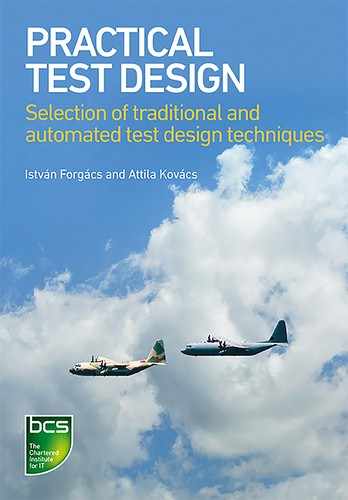0%
39Chapters
0-1Hours read
0kTotal Words
Table of Contents
- Front Cover
- Half-Title Page
- BCS, The Chartered Institute for it
- Title Page
- Copyright Page
- Contents
- List of figures and tables
- Authors
- Foreword
- Acknowledgements
- Abbreviations
- Glossary
- Letter to the reader
- Preface − Testing is complex
- 1. Introduction
- 2. Example Specification: Ticket Vending Machine
- Part I Necessary Steps Before Test Design
- Part II Traditional Test Design
- 5. Domain-Based Testing
- 6. State Transition Testing
- Stateful and stateless systems
- States, transitions, conditions
- Example: RoboDog
- Validate your state transition graph
- Test selection criteria for state transition testing
- All-transition-state criterion
- All-transition–transition criterion
- Example: Collatz conjecture
- When multiple techniques are used together
- State transition testing in TVM example
- Method evaluation
- Theoretical background
- Key takeaways
- Exercises
- 7. Business Rule-Based Testing
- 8. Scenario-Based Testing
- 9. Combinative and Combinatorial Testing
- 10. On-The-Fly Test Design
- Part III Automated Test Design
- Appendix A − TVM models
- Appendix B − Test code for demonstrating GraphWalker
- Appendix C − POM.XML for GraphWalker
- Appendix D − Solutions to the exercises
- References
- Index
- Back Cover
